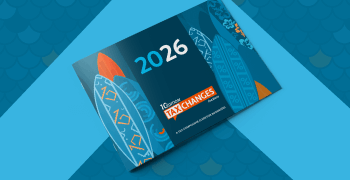The Texas do-si-do (a sales tax sourcing dance) – Wacky Tax Wednesday
Figuring out how to tax each transaction can be one of the most challenging aspects of sales tax compliance, especially in Texas. The Lone Star State is known for its spectacularly intricate sales tax sourcing rules.
A sales tax sourcing primer
Sales tax rates and rules are determined by state and sometimes local governments. When a seller and buyer are in different locations, as often happens with internet, mail-order, mobile, and phone sales, sourcing rules determine which jurisdiction governs sales tax. There are essentially three options:
- The location of the seller (origin sourcing)
- The location of the buyer (destination sourcing)
- A combination of the location of the seller and the location of the buyer (mixed sourcing)
Sellers must know the governing sourcing rule in order to properly tax sales for delivery.
The Texas do-si-do
Texas uses mixed sourcing. Origin sourcing applies to certain city, county, special purpose, and transit sales taxes. Destination sourcing kicks in for local use taxes, when applicable. Different rules apply to in-state and out-of-state sellers.
There are more than 1,500 different local tax jurisdictions in Texas, many of them overlapping. To protect Texans from having to pay Texas-sized taxes, the total combined tax rate for any one transaction cannot exceed 8.25%. Consumers undoubtedly appreciate the 2% local sales tax cap, but for sellers, the cap seems to complicate sourcing rules.
According to David Lingerfelt, director of North American tax content maintenance at Avalara, sales tax sourcing in Texas “is akin to a do-si-do square dance.” As he explains it, the sourcing dance goes a little something like this:
Step 1. City sales tax sourced at the origin
Step 2. County sales tax sourced at the origin
Step 3. Special Purpose District sales tax sourced at the origin
Step 4. Metropolitan Transit Authority sales tax sourced at the origin
Step 5. City use tax sourced at the destination if no city sales tax is imposed at the origin and the 2% local tax limit isn’t violated
Step 6. County use tax sourced at the destination if no county sales tax is imposed at the origin and the 2% local tax limit isn’t violated
Step 7. Special Purpose District use tax sourced at the destination if no Special Purpose District sales tax is imposed at the origin and the 2% local tax limit isn’t violated
Step 8. Metropolitan Transit Authority use tax sourced at the destination if it can be imposed without violating the 2% local limitation
In Local Sales and Use Tax Collection – A Guide for Sellers 94-105 (2016), the Texas Comptroller breaks it down to four steps for sellers, like so:
- Collect no more than the 2% cap
- Collect local use taxes in the following order:
- City
- County
- Special purpose districts
- Transit authorities
- Do not collect a local use tax and a local sales tax of the same type
- Collect applicable local use taxes only if engaged in business in the local tax jurisdiction
Despite these guidelines, “it’s nearly impossible to correctly source in-state sales in Texas,” says Scott Peterson, vice president of government relations at Avalara. Lingerfelt concurs, noting “Texas is still not a traditional destination sourcing state. Texas’s intrastate sourcing remains complex.”
Remote sellers use destination sourcing for orders not received or fulfilled from a Texas place of business (they can also apply to collect the alternate single local use tax rate for all sales delivered into the state). However, in-state sellers must collect their home city sales tax, and the destination city use tax if the home city sales tax is less than the 2% cap.
The Texas Comptroller has been working to simplify sales and use tax sourcing. In May 2020, it amended Texas Administrative Code §3.334 concerning local sales and use taxes. Yet to give interested parties an opportunity to seek a legislative change, some changes won’t take effect until October 1, 2021.
Not sure how the Texas do-si-do impacts your business? Worried you'll trip over your feet? The professional services team at Avalara can help.

Avalara Tax Changes 2026 is here
The 10th edition of our annual report engagingly breaks down key policies related to sales tax, tariffs, and VAT.
Stay up to date
Sign up for our free newsletter and stay up to date with the latest tax news.














